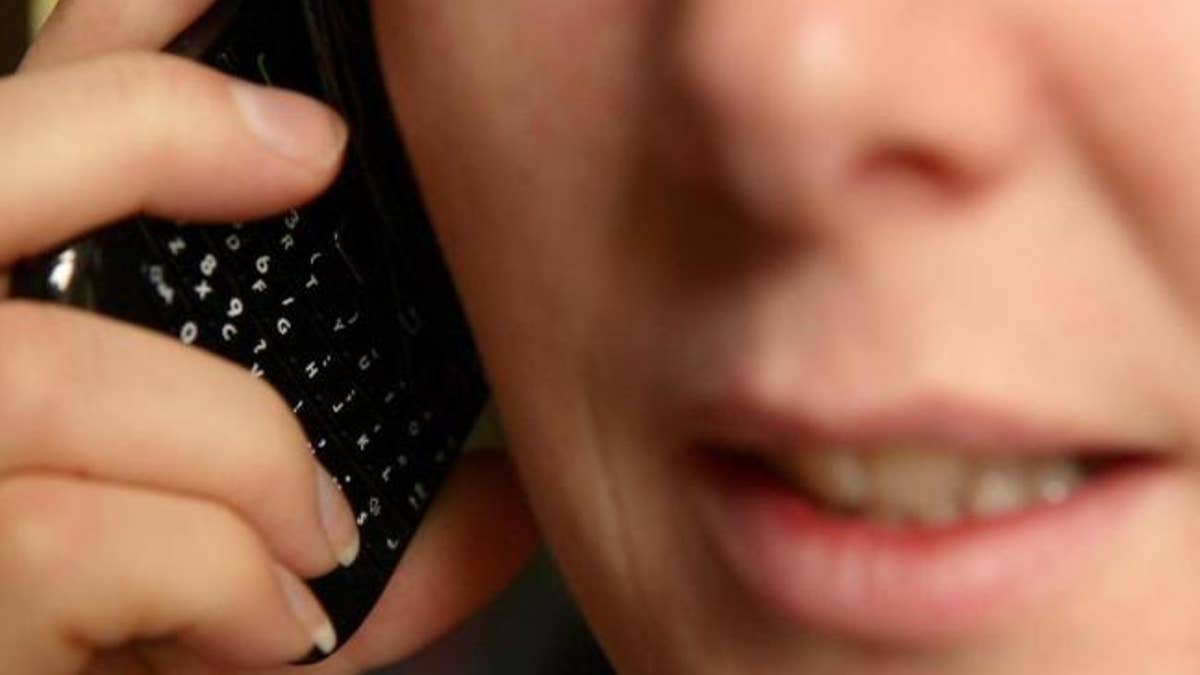
A plea to limit the calls and texts this holiday season. (AP)
Nearly 92 percent of all Americans own cellphones, and for the last 20 years there has been much debate as to the long-term health effects of their use. Many studies in the past have found no relationship between the use of a mobile device and cancer.
In fact, a very large study in Denmark looked at 358,000 cellphone users and compared their cancer rates to brain tumor data from a national cancer registry. The study did not find any link or association between device use and cancer rates. Another recent study published in May 2016 looked at the incidence of brain cancer in Australia from 1982 to 2013 and did not find an uptick in cancer cases with the introduction of cellphones.
The World Health Organization (WHO) considers cellphones to be possibly carcinogenic in humans, but states there is no solid evidence to make any greater claims. The Centers for Disease Control and Prevention (CDC) as well as the American Cancer Society both state that no scientific evidence answers the cancer question with cellphones and that more direct study in humans is needed.
A new study in rats revives the cellphone/cancer debate:
Now, a recently published study potentially linking cancer to cellphone use in rats has sparked panic among many mobile device users.
The study, conducted by scientists from the U.S. National Toxicology Program found that when rats were exposed to radiation commonly emitted from cellphones, they were more likely to develop certain types of tumors of the brain and heart.
Interestingly, only male rats showed this association—in females there was no difference. The rats were exposed to the radiation on a daily basis with a regular schedule—the doses were quite large given the proportional size of the animals. Many media outlets have sensationalized this story, which has led to panic among many consumers. It is important to understand the known risks and to interpret any new medical study within context before making widespread claims of definitive cause and effect. We must remember that brain cancer incidence and mortality (death) rates have changed little in the past decade.
To put this all in context, in the U.S., 23,770 new diagnoses and 16,050 deaths from brain and other central nervous system cancers are estimated for 2016—we have been using cellphones for many years and cancer rates have not increased significantly over time.
So exactly what type of radiation do cellphones actually produce?
Cellphones emit radiofrequency energy, which is a form of electromagnetic radiation. Electromagnetic radiation can be ionizing—energy and frequency is high (think cosmic rays) or non -ionizing where energy and frequency is low. Cellphones emit low-energy, low-power, low-frequency non-ionizing radiation. Cancer in humans has been clearly associated with ionizing radiation.
However, there is no current evidence to associate non-ionizing radiation with cancer—the only consistently proven biologic affect of radiofrequency energy is that of heating. In fact, many medical procedures actually involve the use of radiofrequency heating as a surgical tool to treat certain diseases. It is important to note that radiofrequency energy does not cause changes in DNA—human genetic material—that can result in mutations and cancers.
So, what exactly can we conclude from this study?
At this point, I don't think that we need to cease the use of cellphones or switch to headsets and other devices for communication—there just simply is not enough evidence to justify such drastic changes.
We must interpret this new information carefully. Keep in mind that findings in animal studies should never be generalized to other species—such as humans—until further species specific research is performed. Animal studies provide guidance for asking important questions that may provide better understanding in humans.
Several major major questions and caveats are raised by the new study. The control group had NO tumors—even though it is known that this type of rat develops brain tumors spontaneously at a low rate. If the controls had had a more credible two percent rate, the result for brain cancer would no longer be significant. Another issue that is difficult to explain is that the tumors were mainly in male rats—which also draws the conclusions of the study into question.
With all that said, there are some other interesting points from the study—and these findings are likely to lead to further study in humans. At this point, the findings should not lead to any type of comprehensive statement on risk in humans nor should it lead to regulation.
Things to know:
1. Cellphones do emit radiation, but the type of radiation emitted causes mild heating of adjacent tissues and has not been associated with cancer in any well-designed scientific studies.
2. There is no reason to change your cellphone habits based on the research available to us now. Most studies have found no association between cellphone exposure and cancer.
3. More study is needed in humans over long periods of time in order to better answer this question. It may remain unanswered for many years. A large study has enrolled approximately 290,000 cellphone users aged 18 years or older to date and will follow them for 20 to 30 years to see if there are any health-related side effects or trends identified.
Dr. Kevin R. Campbell is an assistant professor of medicine in the division of cardiology at University of North Carolina.







































